- The older folk among you will remember the unearthly 'look' of the sadly defunct polaroid SX70 film, but here's a reminder:
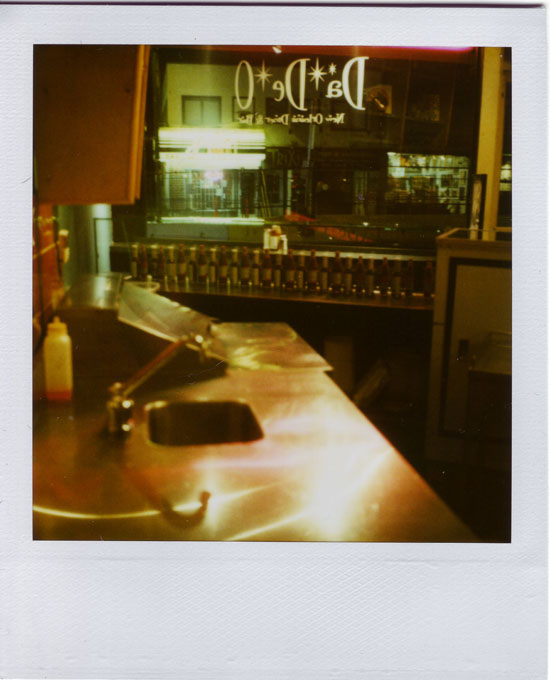
More here:
http://polafiction.com/wp-content/uploads/2007/03/ukiah.jpg
http://polafiction.com/wp-content/uploads/2007/04/jacobanne.jpg
Some of you may be tempted to say this is easily reproducible with a soft lens and a bit of grading, but it's more subtle than that.
Here's the spectral sensitivity of a Kodak stock:
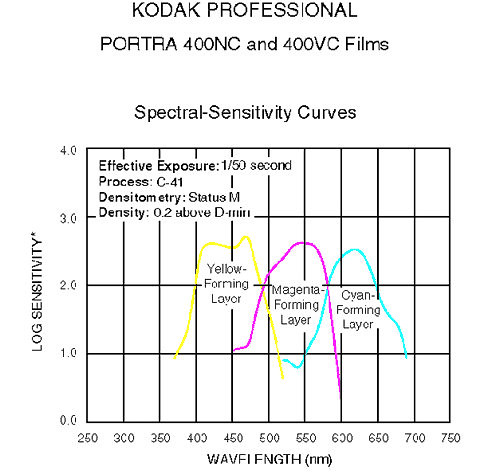
Which is pretty close to that of the human eye:
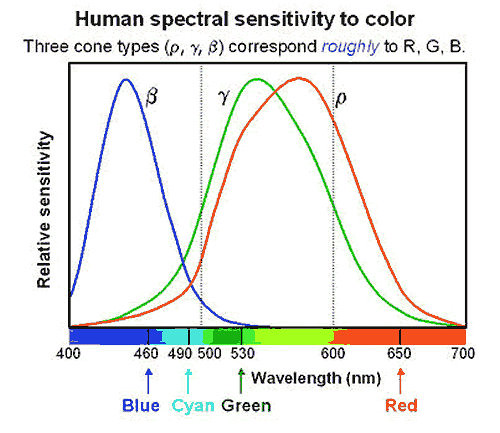
and this is a video CCD chip:
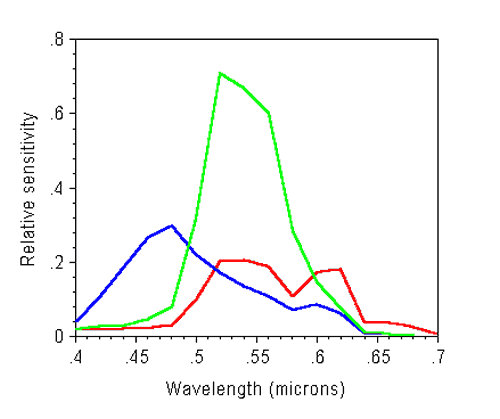
Which is why video is always a poor second to film in color reproduction (ignore the size of the green peak and look at how broad the RGB sensitivities are).
Now take a look at Polaroid:
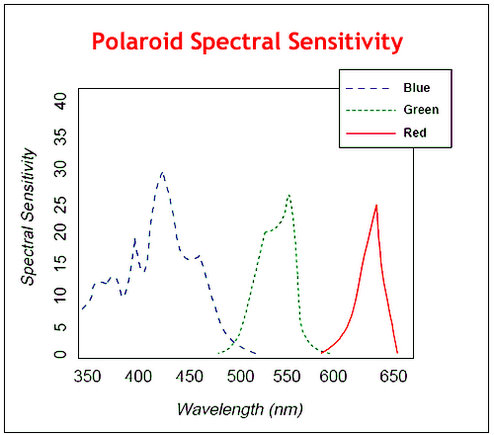
Just looking at the curves you'd think this would yield a crap image. but it doesn't - it yields beautiful images with strange turquoise skies.
Now i've been thinking for a while about how to achieve the Polaroid 'look', and several things can be learnt from these curves:
1) video will never record images in that way
2) you can't do it in post. No computer will be able to distinguish blues of 400nm or 500nm - it will be just recorded as blue, either on film or on video.
3) you can do it with lighting!
If you can light a subject with RGB lights that emit a narrow waveband you will, in theory, produce images that look like Polaroids. I've looked at commercially available gels and their transmition curves are not narrow enough at the required colors.
So here is my challenge to you: are there R G & B LEDs out there, at a reasonable price, that have spectral curves similar to those above.
Ironically, the best Polaroid pictures were taken in daylight, whereas an LED based lighting system would be used indoors.
Last edited:



